Parametric Equation of the Hyperbola
We will learn in the simplest way how to find the parametric equations of the hyperbola.
The circle described on the transverse axis of a hyperbola as diameter is called its Auxiliary Circle.
If x2a2 - y2b2 = 1 is a hyperbola, then its auxiliary circle is x2 + y2 = a2.
Let the equation of the hyperbola be, x2a2 - y2b2 = 1
The transverse axis of the hyperbola x2a2 - y2b2 = 1 is AA’ and its length = 2a. Clearly, the equation of the circle described on AA’ as diameter is x2 + y2 = a2 (since the centre of the circle is the centre C (0, 0) of the hyperbola).
Therefore, the equation of the auxiliary circle of the
hyperbola x2a2 - y2b2 = 1 is, x2 +
y2 = a2
Let P (x, y) be any point on the equation of the hyperbola be x2a2 -y2b2 = 1
Now from P draw PM perpendicular to the transverse axis of the hyperbola. Again take a point Q on the auxiliary circle x2 + y2 = a2 such that ∠CQM = 90°.
Join the point C and Q. The length of QC = a. Again, let ∠MCQ = θ. The angle ∠MCQ = θ is called the eccentric angle of the point P on the hyperbola.
Now from the right-angled ∆CQM we get,
CQMC = cos θ
or, a/MC = a/sec θ
or, MC = a sec θ
Therefore, the abscissa of P = MC = x = a sec θ
Since the point P (x, y) lies on the hyperbola x2a2 -y2b2 = 1 hence,
a2sec2θa2 - y2b2 = 1, (Since, x = a sec θ)
⇒ y2b2 = sec2 θ – 1
⇒ y2b2 = tan2 θ
⇒ y2 = b2 tan2 θ
⇒ y = b tan θ
Hence, the co-ordinates of P are (a sec θ, b tan θ).
Therefore, for all values of θ the point P (a sec θ, b tan θ) always lies on the hyperbola x2a2 - y2b2 = 1
Thus, the co-ordinates of the point having eccentric angle θ can be written as (a sec θ, b tan θ). Here (a sec θ, b tan θ) are known as the parametric co-ordinates of the point P.
The equations x = a sec θ, y = b tan θ taken together are called the parametric equations of the hyperbola x2a2 - y2b2 = 1; where θ is parameter (θ is called the eccentric angle of the point P).
Solved example to find the parametric equations of a hyperbola:
1. Find the parametric co-ordinates of the point (8, 3√3) on the hyperbola 9x2 - 16y2 = 144.
Solution:
The given equation of the hyperbola is 9x2 - 16y2 = 144
⇒ x216 - y29 = 1
⇒ x242 - y232 = 1, which is the form of x2a2 - y2b2 = 1.
Therefore,
a2 = 42
⇒ a = 4 and
b2 = 32
⇒ b = 3.
Therefore, we can take the parametric co-ordinates of the point (8, 3√3) as (4 sec θ, 3 tan θ).
Thus we have, 4 sec θ = 8
⇒ sec θ = 2
⇒ θ = 60°
We know that for all values of θ the point (a sec θ, b tan θ) always lies on the hyperbola x2a2 - y2b2 = 1
Therefore, (a sec θ, b tan θ) are known as the parametric co-ordinates of the point.
Therefore, the parametric co-ordinates of the point (8, 3√3) are (4 sec 60°, 3 tan 60°).
2. P (a sec θ, a tan θ) is a variable point on the hyperbola x2 - y2 = a2, and M (2a, 0) is a fixed point. Prove that the locus of the middle point of AP is a rectangular hyperbola.
Solution:
Let (h, k) be the middle point of the line segment AM.
Therefore, h = asecθ+2a2
⇒ a sec θ = 2(h - a)
(a sec θ)2 = [2(h - a)]2 …………………. (i)
and k = atanθ2
⇒ a tan θ = 2k
(a tan θ)2 = (2k)2 …………………. (ii)
Now form (i) - (ii), we get,
(a sec θ)2 - (a tan θ)2 = [2(h - a)]2 - (2k)2
⇒ a2(sec2 θ - tan2 θ) = 4(h - a)2 - 4k2
⇒ (h - a)2 - k2 = a24.
Therefore, the equation to the locus of (h, k) is (x - a)2 - y2 = a24, which is the equation of a rectangular hyperbola.
● The Hyperbola
- Definition of Hyperbola
- Standard Equation of an Hyperbola
- Vertex of the Hyperbola
- Centre of the Hyperbola
- Transverse and Conjugate Axis of the Hyperbola
- Two Foci and Two Directrices of the Hyperbola
- Latus Rectum of the Hyperbola
- Position of a Point with Respect to the Hyperbola
- Conjugate Hyperbola
- Rectangular Hyperbola
- Parametric Equation of the Hyperbola
- Hyperbola Formulae
- Problems on Hyperbola
11 and 12 Grade Math
From Parametric Equation of the Hyperbola to HOME PAGE
Didn't find what you were looking for? Or want to know more information about Math Only Math. Use this Google Search to find what you need.
Recent Articles
-
Subtraction | How to Subtract 2-digit, 3-digit, 4-digit Numbers?|Steps
Apr 23, 25 12:41 AM
The answer of a subtraction sum is called DIFFERENCE. How to subtract 2-digit numbers? Steps are shown to subtract 2-digit numbers. -
Subtraction of 4-Digit Numbers | Subtract Numbers with Four Digit
Apr 23, 25 12:38 AM
We will learn about the subtraction of 4-digit numbers (without borrowing and with borrowing). We know when one number is subtracted from another number the result obtained is called the difference. -
Subtraction with Regrouping | 4-Digit, 5-Digit and 6-Digit Subtraction
Apr 23, 25 12:34 AM
We will learn subtraction 4-digit, 5-digit and 6-digit numbers with regrouping. Subtraction of 4-digit numbers can be done in the same way as we do subtraction of smaller numbers. We first arrange the… -
How to Do Long Division? | Method | Steps | Examples | Worksheets |Ans
Apr 22, 25 12:42 PM
As we know that the division is to distribute a given value or quantity into groups having equal values. In long division, values at the individual place (Thousands, Hundreds, Tens, Ones) are dividend… -
Division of Four-Digit by a One-Digit Numbers | Worksheet with Answer
Apr 22, 25 12:12 PM
In division of four-digit by a one-digit numbers are discussed here step by step. How to divide 4-digit numbers by single-digit numbers?
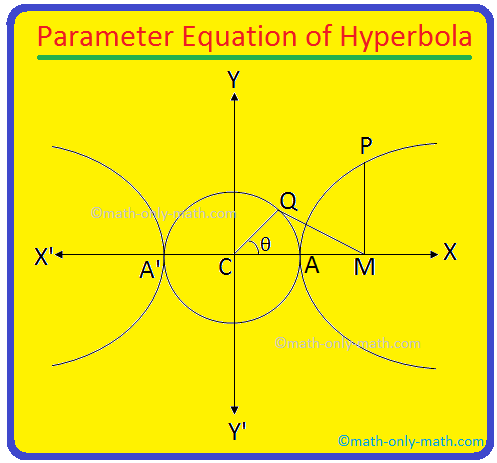

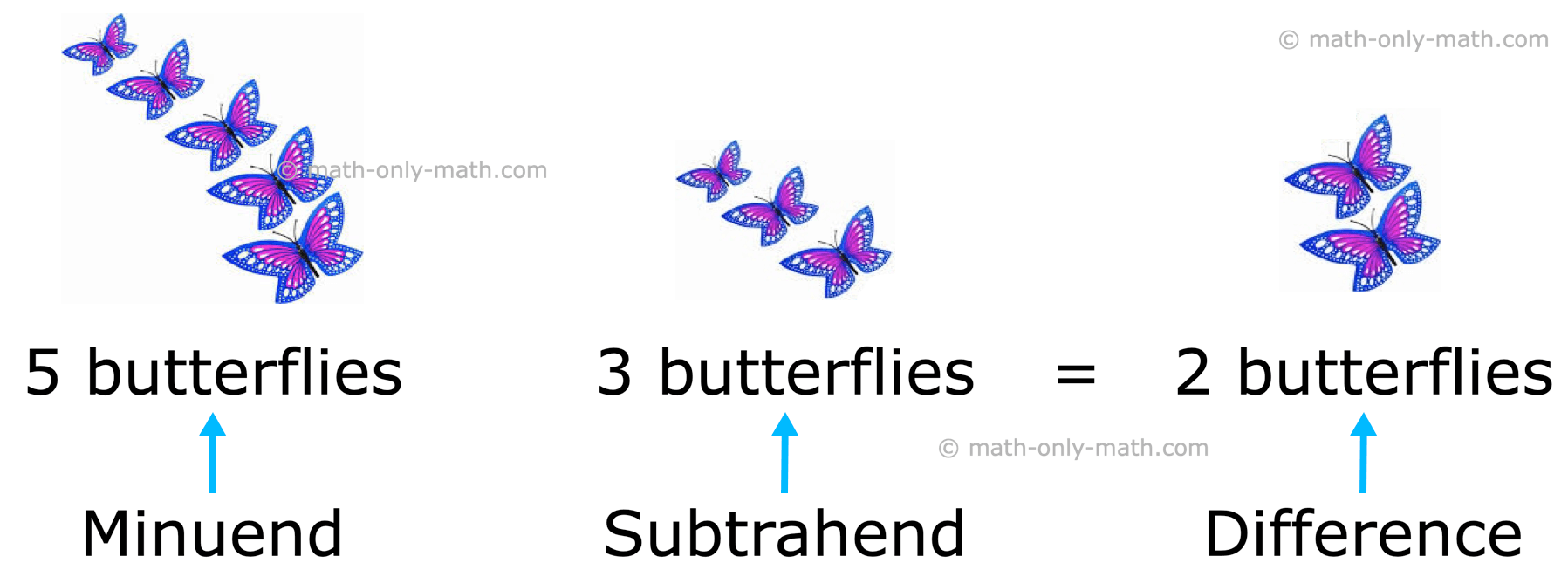
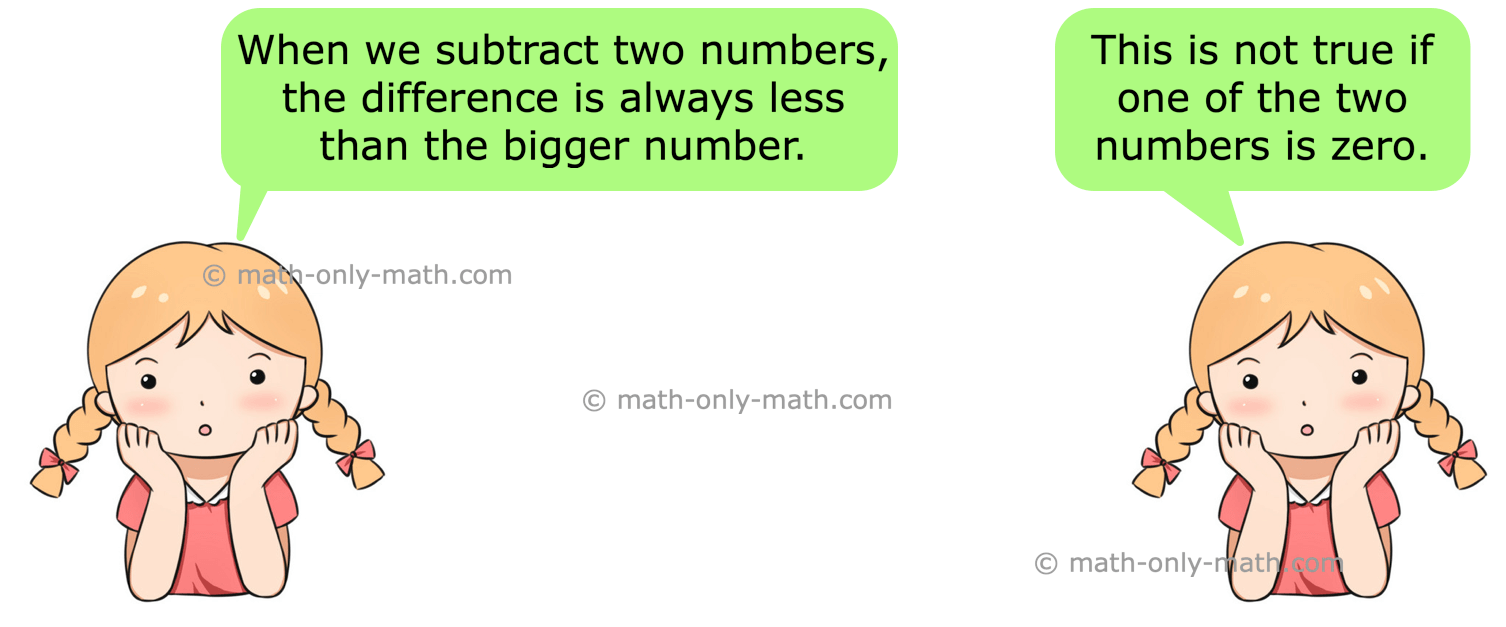
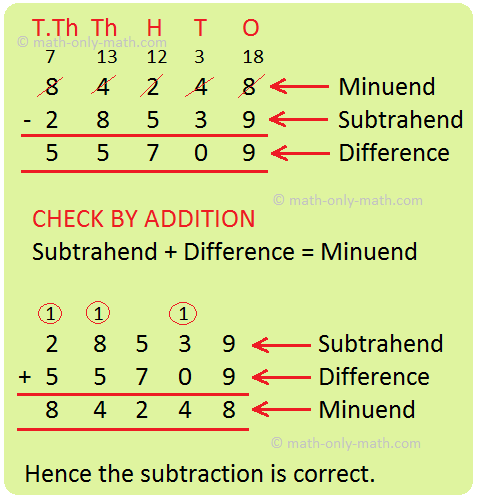
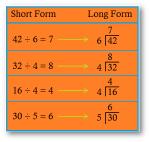
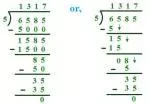
New! Comments
Have your say about what you just read! Leave me a comment in the box below. Ask a Question or Answer a Question.